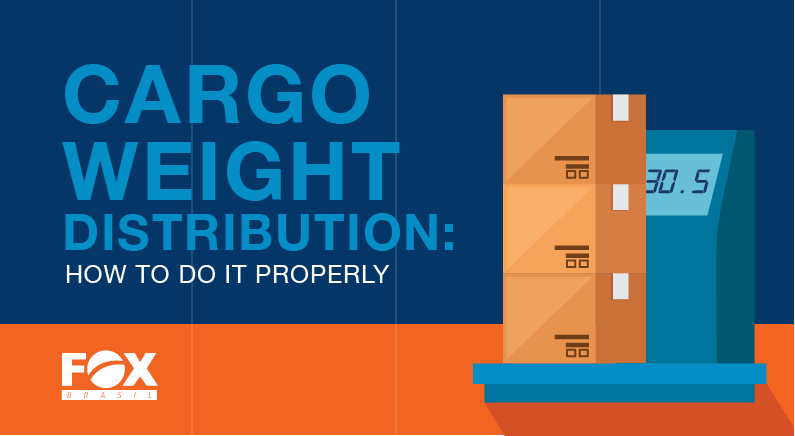Cargo weight distribution: How to do it properly

FOX Brasil Tips for Freight Forwarders
Knowing how to do the cargo weight distribution properly is one of the most important aspects of moving cargo in road freight. Besides that, the correct distribution influences directly in road wear and tear. Therefore, it is essential for logistics companies to perform a weight distribution analysis before loading the trucks to prevent overload and problems for users and the vehicle.
Many states and countries have strict laws and regulations about trucks driving the roads within posted weight limits. For that, companies have to be aware and monitor closely the cargo load, the limits that each vehicle can carry, and how their trucks are performing.
With that in mind, we prepared this post to let you know how to distribute the cargo weight in trucks properly and why it is essential for your vehicles and your company to do it right. Good reading!
Cargo weight distribution: why is it important?
Technically speaking, the weight distribution on a truck is related to the total weight that is supported by each axle and individual tire. So, doing it properly is essential to some of the vital truck’s components: breaks, springs, bearings, and tires.
That is because a poorly packed truck shortens the life of a vehicle and its components, wearing the brakes and tires. And also can result in fines for operating with overweight and not complying with laws and safety standards.
How to properly distribute cargo weight
As you know, the correct distribution of the cargo and payload capacity are key factors to prevent overload. But how to do it properly? That is what you are going to find out in the next lines. Take a look:
Step One
Analyze the type of cargo, the vehicle that will make the transport, number of axles, distance between them, the amount of weight allowed in the steering axle, the size of the tires and the type of suspension. All of that will be used to determine the gross weight allowable in the truck.
Step Two
Always have the proper loading equipment on hand to ensure that the cargo will be moved and packed in the right way. That certifies the truck safety and that the shipment will be loaded correctly.
Step Three
Pay attention to the two major axles under the truck’s bed. They are designed to handle 43% of the weight, so remember to plan the distribution between the two rear axles. The front axle handles typically 14% of the importance and supports the engine and the cab.
Step Four
Now it is time to arrange the cargo. Stack your shipment in front of your truck, and if you have a full load, work your way back. That means: be sure to leave a space near the rear of the vehicle. That prevents the cargo from spilling out if the doors open while the truck is on the road. This space is also a way to minimize the pressure on the doors during cargo shift and transit.
Step Five
When packing a partial load, it is essential to start loading just behind the front axle and ending before the second axle. That helps to ensure an even weight distribution and prevents wear and tear on the truck’s tires. After you finish loading, make sure that you have the proper amount of weight distributed over each axle and check if there are any adjustments you need to make to satisfy state and federal regulations.
Axle capacities
It is essential to know a little bit more about the axle capacities in this scenario. They are limited either by their capacity (the truck manufacturer informs that data) or by legal weight limits, whichever is lower. So, having the correct wheelbase on the chassis and placing the loads in the proper places inside the vehicle ensures that the axles are loaded correctly.
As you can see the proper weight distribution in the axles when loading a truck for road freight is essential not only to comply with regulations but also to expand the lifespan of the vehicles and transport the goods in the right way, with quality and safety.
Now that you know how to do the cargo weight distribution properly, why not put our tips into practice? Avoid the risks of overload and fatalities caused by accidents and lawsuits, and make sure that you are delivering reliable and excellent services!
So, do you need a reliable partner to deliver your cargo?
Then count on Fox Brasil’s expertise! We are a freight forwarder with plenty of experience in assisting companies in moving any product safely and with the most competitive prices.
